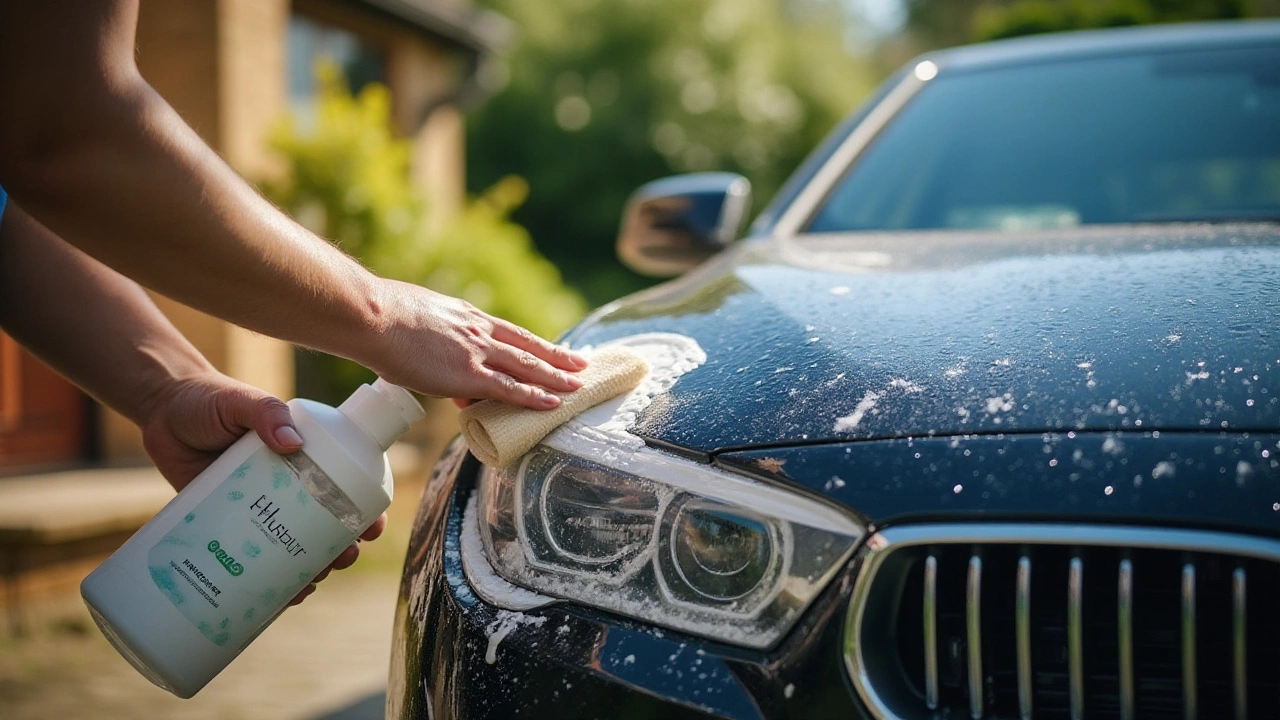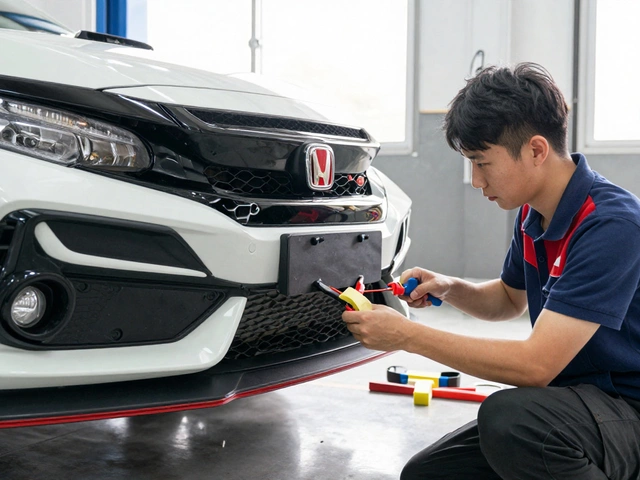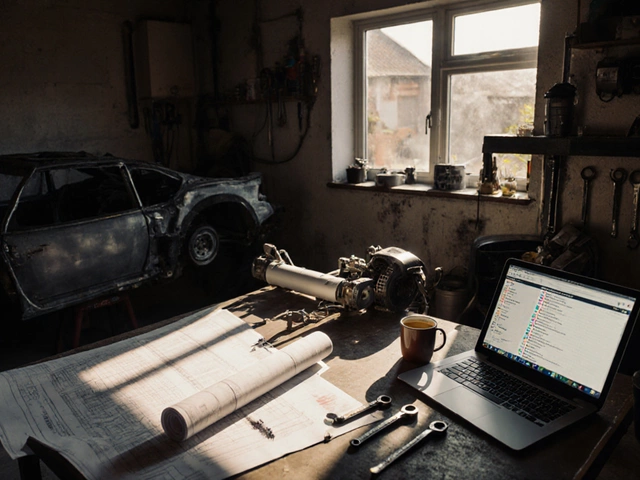Washing a car can often seem like a straightforward task, yet for those seeking that pristine look, it's all about the details. The right products and tools can transform a simple wash into a therapeutic experience, and ensure your car's exterior maintains that just-bought shine.
In this article, we'll dive into the essentials you need to get the job done right. From choosing the perfect soap to using the appropriate cloth, learn how each product plays a pivotal role in car care. Whether you're a weekend warrior or someone who finds joy in car detailing, these insights can help you elevate your car wash game.
- Understanding Car Wash Essentials
- Choosing the Right Soap
- The Importance of Wash Mitts and Sponges
- Water Quality: Does It Matter?
- Drying Essentials: Say No to Spots
- Eco-Friendly Options for Car Detailing
Understanding Car Wash Essentials
When setting out to wash your car, the first and often most crucial task is gathering the right car detailing tools. This isn't just about aesthetics; it's about preserving your car's value and maintaining its longevity. To some, it might sound like a mundane weekend chore, but with the right setup and products, it can transform into an enjoyable routine that not only prolongs the health of your vehicle but can also be immensely satisfying. Think of it this way—each time you wash your car, you’re giving it a new lease on life, ensuring dirt and grime don’t get an opportunity to wear and tear the paintwork. Begin with a thorough inspection of your vehicle under natural light to identify areas that might need more attention. It's not only about washing away dust but also about understanding what your car needs for a truly clean finish.
First and foremost, selecting a high-quality car shampoo is a must. Unlike household soaps, these are specifically designed to keep your car's paint protected while breaking down dirt and grime efficiently. An ideal product will offer a perfect balance—not too harsh to strip away wax or damage finish, yet strong enough to handle day-to-day contaminants. It's been said by seasoned car enthusiasts that using a product specifically tailored for cars can make a palpable difference in the end result. In the words of Leon Watson, a veteran car detailer and author, “Proper car cleaner is the closest a car's surface will get to a natural spa experience.” Using the right soap helps avoid the risk of unsightly swirls and scratches that can detract from your car’s glossy look.
The Right Tools for the Job
The tools you choose can make all the difference. A good quality car detailing mitt or sponge, preferably made of microfiber, is essential. Its soft texture will reduce the risk of scratches while being effective at lifting dirt. They’re worth the investment, as they can withstand multiple washes and won't turn abrasive over time. Remember that each part of the car, from bumper to bumper, requires a different touch. For instance, a gentle mitt might be perfect for the body, whereas a tougher sponge may be required for wheels and rims.
Next comes the car care kit. The perfect kit usually contains specialized brushes to reach tricky spots, ensuring no nook or cranny is missed. For wheels, a separate brush is essential as they generally endure more grime. When using these tools, it's important to follow a strategic washing method. Begin from the top, working your way down, and always keep your tools clean by rinsing regularly.
Importance of Water Quality
The water used plays a critical role in car washing. Hard water can leave mineral deposits or spots that diminish the finish you work so hard to preserve. Using distilled or softened water whenever possible can significantly reduce this risk. Although it might not seem like a priority, the water quality can make more of an impact than one might assume, especially if you are using wax as part of your routine. Studies highlight that cars washed with soft water retain polish longer due to fewer mineral deposits disrupting the wax's ability to adhere.
"Water quality is crucial for a car's clarity and the brilliance of its finish," emphasized Daniel O'Connor, an award-winning automotive restorer. "Getting it right can save you hours of redoing surfaces that just don't sparkle as they should."
Whether you are a casual car enthusiast or someone deeply interested in maintaining their vehicle’s exceptional condition, getting to grips with these car wash essentials is key. Investing time upfront in understanding which products and techniques suit your car best ensures a superior shine while protecting its finish for the long haul.
Choosing the Right Soap
When it comes to maintaining your car's pristine condition, selecting the right soap is imperative. Not all soaps are created equal, and using just any old cleaner can lead to more harm than good. Car soaps are specially formulated to gently lift dirt and grime without stripping away the protective wax coating. This is crucial because regular household detergents can be too harsh, dulling the paint and leaving it vulnerable to the elements. There are a variety of options on the market, each offering unique benefits. Some soaps boast added wax for a quick shine, while others focus on minimal water spots.
When selecting a car soap, consider the pH level, as it can affect the soap's cleaning performance. A pH-neutral soap is ideal because it maintains chemical balance, providing effective cleaning without being too harsh on your car's finish. This harmonizes the cleaning process while safeguarding your vehicle’s delicate surface. Additionally, look for products with lubricating agents, which help loosen dirt without causing scratching. Foamier soaps can offer a more cushioned clean, reducing the risk of small scratches.
"A good car soap is not just about cleaning, it’s about preserving the vehicle's finish," notes Dr. Mike Schultz, a car detailing guru and author of 'The Art of Detailing'. "Opt for soaps that complement your local water conditions to maximize results."
Using eco-friendly car soaps can be a game changer for both the environment and your car. Many companies are beginning to offer biodegradable options, which break down more naturally in waterways. This is an important consideration, especially in regions with strict environmental regulations or where water conservation is key. Eco-friendly soaps often use plant-based surfactants, providing ample cleaning power without harsh chemicals.
To summarize, picking the right car soap is no trivial matter. Here are some points to keep in mind:
- Opt for a pH-neutral soap to best protect your finish.
- Consider foam intensity to avoid micro scratches.
- Evaluate for eco-friendly ingredients if environmental impact is a concern.
By investing in a high-quality car soap, you not only ensure the best clean but also protect your investment. Next time you're stocking up, keep these tips in mind for a gleaming, protected ride.
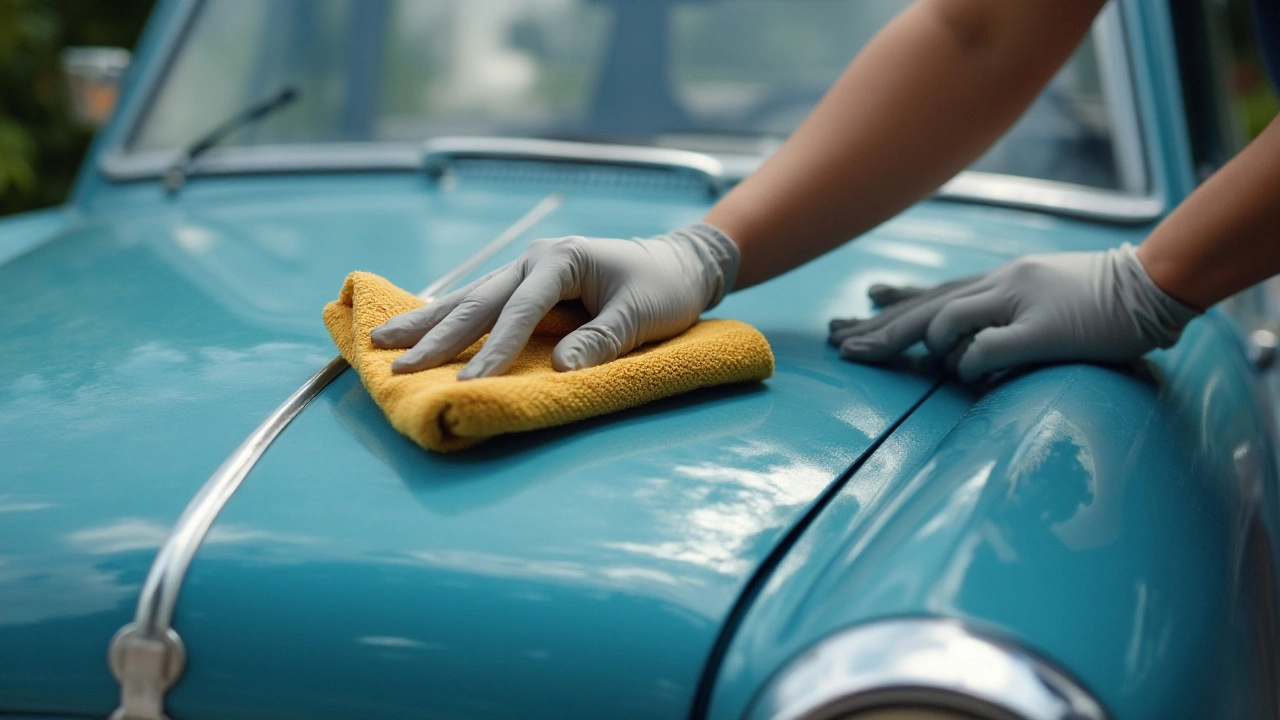
The Importance of Wash Mitts and Sponges
When it comes to car detailing, not all tools are created equal, and this is especially true for wash mitts and sponges. These two items might seem commonplace, but their design and material truly matter when preserving the pristine finish of your vehicle. The type of accessory you choose for washing your car can make a significant difference in preventing scratches and swirls that can diminish your car's aesthetics over time. Microfiber mitts, with their soft and plush texture, are particularly favored for their ability to trap dirt and dust particles effectively, reducing abrasion risk.
The texture and absorbency of the mitt are crucial. Microfiber is renowned for its superior absorbency, holding a substantial amount of water and soap. This not only aids in lubrication but also in creating a layer of protection for the car's paint. A high-quality microfiber mitt can last for numerous washes, making it a worthwhile investment for regular detailers. Maintenance of these mitts is crucial; they should be washed and dried after every use to prevent leftover grime from damaging the car's surface next time they're used.
Sponges, on the other hand, have evolved dramatically beyond their traditional counterparts. Modern synthetic sponges offer advanced features like dual-sided textures for versatile cleaning applications. Some sponges feature a honeycomb texture that provides a gentle scrub without being overly aggressive on the paintwork. According to industry expert Mike Phillips, "The right tools are like an extension of your hands; they ensure efficiency and effectiveness without compromising the surface integrity of what you're working on."
When choosing between mitts and sponges, it's essential to assess the specific needs of your car and your own washing techniques, striking a balance between flexibility and control.
While choosing your washing accessory, consider how you wash and the conditions you wash under. For instance, a wash mitt may offer superior control in detailing intricate parts or crevices thanks to its glove-like design. On the other hand, larger sponges cover broader surfaces efficiently and work well on larger vehicles. Pairing these with a good quality, lubricated car soap maximizes safety and effectiveness. Properly utilizing these tools is something of an art; move gently across your car's body in straight lines instead of circular motions to reduce the risk of marring the paint.
Maintaining these essentials doesn’t just resonate with their longevity, but assures every wash remains scratch and grit-free. Here you might consider investing in extra sets, to rotate and wash them not to use the same mitt with embedded dirt, as this might result in scratches on the surface. Remember, even the most lavish, gleaming cars can only retain their shine with consistent, high-quality maintenance practices. Thus, understanding the role of these seemingly humble items can drastically enhance the outcome of your washing efforts, leaving your car looking its absolute best every time.
Water Quality: Does It Matter?
When it comes to washing your car, the quality of water you use is often overlooked but plays a crucial role in achieving a flawless finish. Unlike the predictable smoothness of soap or the softness of your wash mitt, the nuances of water can dramatically change the results of your wash. Consider hard water, for instance, which contains high mineral content. These minerals, often calcium and magnesium, can leave unsightly spots on your car's surface even after a thorough rinse. It's important to note that these spots are not just superficial; they can embed into your vehicle's paint over time, making them stubborn to remove and potentially damaging the finish.
Understanding Hard vs. Soft Water
On the other hand, soft water, which has a reduced mineral content, ensures a cleaner rinse without the risk of depositing these minerals on your car's surface. A simple water softening system installed at home can transform your car washing process, providing a cleaner rinse and a more pristine finish. A study showed vehicles washed with softened water had a luminous gloss, highlighting the difference it can make. But it's not just about avoiding spots; smooth rinses require softer water to prevent soap from clinging onto the surface, which can cause streaks.
"Hard water can not only mar the paintwork but also impact the efficacy of the detergents used during cleaning," says Dr. Emma Ford, an expert in automotive care products.
Temperature and Pressure: Key Influencers
Water temperature can also influence your car wash success. Warm water tends to be more effective in breaking down dirt and grime compared to cold. This is because warmer temperatures increase molecular activity, allowing cleaning agents to work more efficiently. However, avoid extremes; too hot and you may risk softening the wax layer or, in extreme cases, affecting the paint integrity. Pressure, too, plays a part—too high and you may damage seals or the paintwork, too low and you're left trying to remove grime with no luck.
Water Saving Tips for an Eco-Conscious Shine
As the global focus increasingly shifts towards sustainability, conserving water during car washes is essential. Implementing water-saving techniques like using a high-pressure washer or employing a no-rinse wash can reduce water use significantly. According to the International Carwash Association, professional car washes use far less water, about 30-40 gallons per vehicle, compared to up to 140 gallons for home washing. Installing a home water recycling system can also make a huge difference, allowing for a satisfying clean while being kinder to the planet.
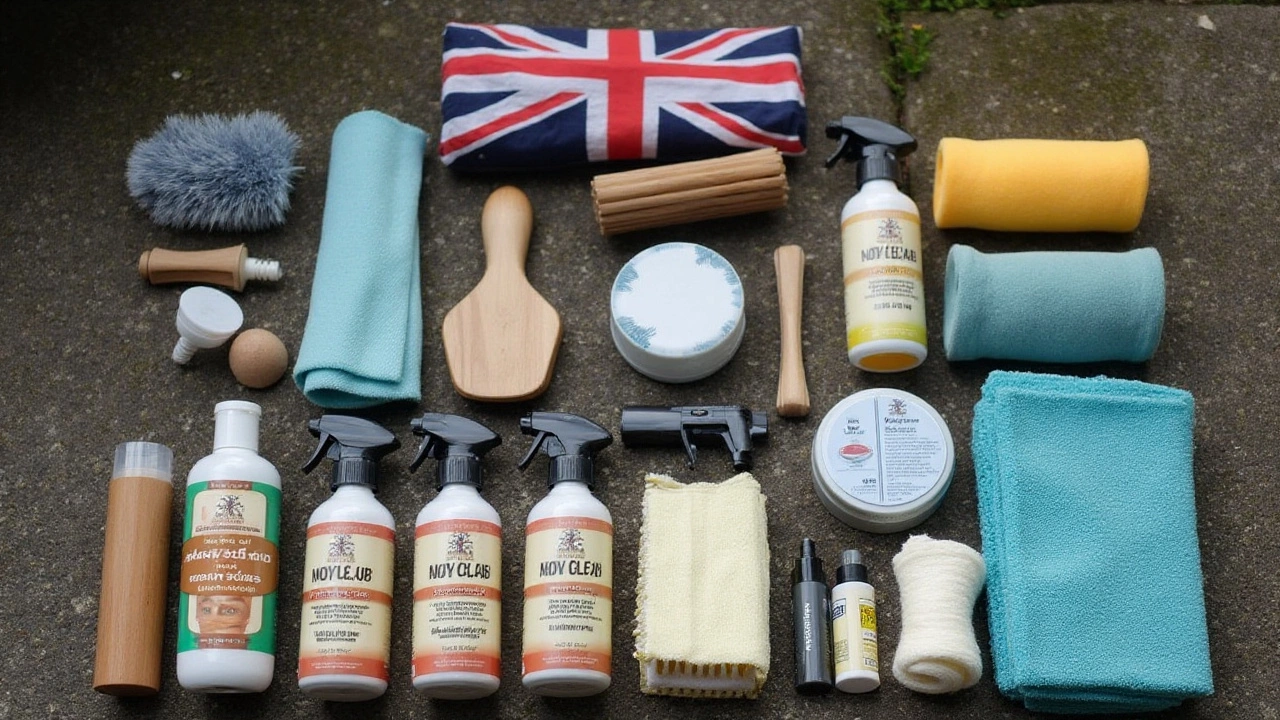
Drying Essentials: Say No to Spots
After you've put in the effort to thoroughly clean your car, the next crucial step is drying it properly. Many don't realize that leaving a car to dry naturally can lead to unsightly water spots, which can compromise the beauty of the newly washed surface. These spots are caused by minerals present in water, such as calcium and magnesium, which remain on the paint as water evaporates. Using the right techniques and tools for drying can eliminate these issues and help maintain the luster and shine of your vehicle.
A good starting point is the quality of the drying materials used. Microfiber towels have long been recommended by car care experts for their superior absorbency and gentle texture. Unlike regular towels, microfiber provides a plush texture that safeguards against scratching, making them a go-to for many car enthusiasts. For the most efficient drying, opt for towels specifically labeled as "drying towels" as they are usually larger and designed for maximum absorption.
"Choosing the right towel can make all the difference," notes Thomas Smithson, a leading expert at Detailer's Choice. "Microfiber towels are designed to absorb more water and prevent the potential damage that inferior materials may cause."
Another crucial tip is to dry the car in sections. This prevents water from drying and leaving behind spots before you can get to that area. Start from the top and work your way down, ensuring that water doesn't run down onto areas you've already dried. For an added layer of protection, a silicone water blade can be used to quickly remove large volumes of water, reducing drying time significantly. However, proceed with caution; improper use could lead to scratches if contaminants remain on the surface.
Some car enthusiasts swear by using forced air devices, like leaf blowers, for drying. While it might sound unconventional, devices like these can access hard-to-reach areas where water might be trapped, like door handles and side mirrors. This tactic can be especially useful for those looking to avoid any potential swirl marks that might be caused by towel drying. Whether you're using towels or forced air, ensuring the car is thoroughly dried will not only prevent spots but also set the perfect stage for applying car wax or polish, should you choose to go that extra mile in your car detailing routine.
Eco-Friendly Options for Car Detailing
As concerns about environmental sustainability grow, car enthusiasts and everyday drivers alike are becoming increasingly interested in eco-friendly car care solutions. But, how does one detail a car without compromising the planet? One of the first steps is choosing the right products. It's not just about effectiveness anymore; it's about ensuring these products don’t inadvertently harm ecosystems once they rinse down the drain. Biodegradable soaps have emerged as fantastic alternatives to their chemical-laden counterparts. These soaps efficiently break down in nature without leaving harmful residues behind. Some of the leading brands now offer plant-based options that are designed to be tough on grime but gentle on our planet.
Another aspect of eco-friendly detailing involves water consumption. Traditional car washes can use between 80 and 140 gallons of water per wash. By adopting methods such as waterless car washes or using spray-on and wipe-off waxes, one could considerably reduce this number. These methods not only save water but also reduce the risk of runoff pollution. Some products on the market are packaged in recyclable materials or offer refill options to cut down on plastic waste. This shift toward sustainability is not just a trend—it's a responsibility we're increasingly embracing.
Would you believe that using the right tools can also contribute to an eco-friendly car wash? Microfiber cloths have gained popularity due to their durability and efficiency. Unlike traditional cleaning rags, they trap dirt within their fibers, reducing the need for chemical cleaners. By doing so, they help in cutting down the amount of chemical residue that enters local water systems. Additionally, these cloths can be reused hundreds of times if properly cared for, further reducing waste.
A compelling development is the integration of renewable energy sources in car detailing. Some eco-conscious entrepreneurs have begun utilizing solar-powered vacuums and polishers, minimizing reliance on fossil fuels. This aligns with broader trends towards sustainable energy consumption across all industries. As technology progresses, these applications will become more feasible and available to the mainstream market.
"The biggest barrier to eco-friendly car care has always been the perception that it didn’t work as well," states an expert from the Environmental Protection Foundation. "But, with current advancements in technology, we find this is no longer the case. Many eco-friendly products now rival their traditional counterparts in terms of quality and effectiveness."
Ultimately, embracing eco-friendly options for car detailing is more than a responsible choice; it's an investment in the future. Not only does it preserve the quality of your vehicle, but it also ensures the health of our planet for generations to come. With these strategies, we can all reduce our carbon footprint without compromising on the results.

